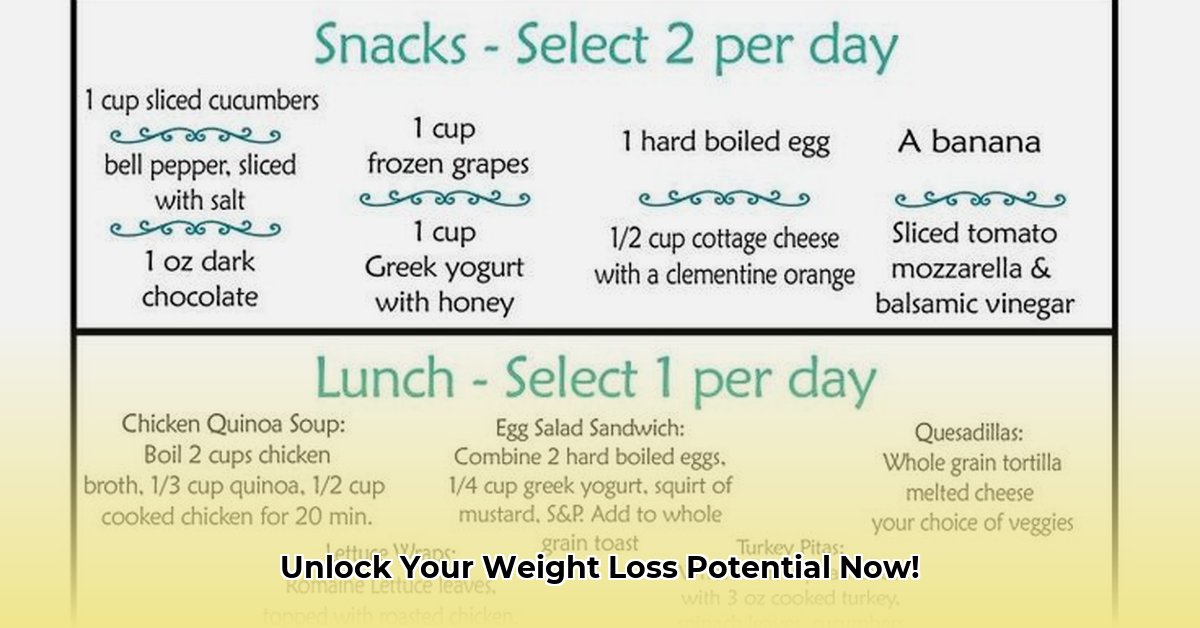
Thinking about the Thrive Diet for weight loss? This comprehensive review explores its benefits, risks, and how to approach it safely. We'll examine the program's core principles, potential upsides and downsides, and provide a step-by-step guide for those considering this raw vegan approach. Is it the right choice for you? Let's find out.
Understanding the Thrive Diet: A Raw Vegan Approach
The Thrive weight loss program centers around a 100% raw vegan diet, emphasizing unprocessed plant-based foods. Proponents highlight potential benefits like weight loss, increased energy, and improved blood sugar control. The high fiber content and lower calorie density of raw fruits, vegetables, nuts, and seeds are seen as key contributors to these effects. But is it all sunshine and rainbows? Let's delve deeper. Could this restrictive diet lead to unintended consequences?
Potential Benefits: The Upsides of Thrive
Many proponents report positive experiences with the Thrive diet, citing several potential benefits:
- Weight Loss: The naturally lower calorie density of raw foods and increased satiety often lead to reduced calorie intake and subsequent weight loss.
- Increased Energy Levels: Improved digestion, often associated with a diet rich in fruits and vegetables, can result in sustained energy throughout the day.
- Improved Blood Sugar Control: The high fiber content can help regulate blood glucose levels, potentially beneficial for those with insulin resistance or managing diabetes.
- Nutrient-Rich Foods: Raw foods typically retain more vitamins and minerals compared to cooked foods, potentially providing a broader range of essential nutrients. (However, this requires careful planning to avoid deficiencies.)
Potential Downsides: Navigating the Challenges of a Raw Vegan Diet
While the benefits are tempting, it's crucial to acknowledge potential drawbacks:
- Nutrient Deficiencies: A strictly raw vegan diet can easily lead to deficiencies in essential vitamins (B12, D), minerals (iron, calcium), and omega-3 fatty acids. Supplementation might be necessary, and close monitoring is crucial.
- Sustainability: Maintaining a 100% raw vegan diet long-term is incredibly challenging for most people. The lifestyle changes are significant and require exceptional commitment.
- Digestive Issues: Switching to a raw food diet abruptly can cause digestive discomfort, including bloating, gas, and diarrhea. A gradual transition is highly recommended.
- Individual Variability: The Thrive diet might not be suitable for everyone, particularly those with pre-existing health conditions or specific dietary needs. Professional guidance is essential.
Is the Thrive Diet Right for You? A Critical Self-Assessment
Before embarking on the Thrive Diet, consider these key questions:
- Lifestyle Commitment: Are you prepared for a significant lifestyle overhaul? This diet necessitates meticulous planning and dedication.
- Long-Term Sustainability: Can you realistically maintain this dietary restriction long-term? Sustainable habits are key to lasting weight management.
- Nutritional Monitoring: Are you willing to diligently track nutrient intake and potentially take supplements? Addressing potential deficiencies is paramount.
- Professional Consultation: Have you consulted your doctor or registered dietitian? This is vital, especially if you have underlying health conditions.
Getting Started Safely: A Step-by-Step Guide
If, after careful consideration, you decide to proceed, follow these steps:
- Consult Your Doctor: Discuss the Thrive diet with your physician or registered dietitian before making any major changes. They can assess potential risks and ensure it's suitable for your health status.
- Gradual Transition: Don't make drastic changes overnight. Introduce raw foods gradually over several weeks, slowly reducing your intake of cooked foods.
- Nutritional Tracking: Use a food diary, app, or consult a registered dietitian to monitor your nutrient intake. This helps ensure you meet your nutritional needs.
- Regular Monitoring: Pay close attention to your weight, energy levels, and overall well-being, making adjustments as needed.
- Supplementation (As Needed): Based on your doctor's recommendation, consider supplementing to address potential nutrient deficiencies.
Addressing Nutrient Deficiencies on the Thrive Diet
The Thrive Diet's highly restrictive nature poses a significant risk of nutrient deficiencies. Addressing these is crucial for your health and the success of the program.
Key Nutrients at Risk
- Vitamin B12: Essential for nerve function and red blood cell production, primarily found in animal products. Deficiency can lead to anemia and neurological issues.
- Iron: Vital for oxygen transport. Iron absorption from plant sources is less efficient than from animal sources. Deficiency can cause fatigue and anemia.
- Calcium: Crucial for bone health. Absorption from plant sources can be influenced by other dietary factors. Deficiency can increase the risk of osteoporosis.
- Vitamin D: Important for calcium absorption and immune function. Limited sun exposure or darker skin pigmentation can lead to deficiencies.
Strategies for Prevention
- Prioritize Nutrient-Rich Foods: Choose foods naturally rich in these nutrients, such as leafy greens, legumes, fortified plant milks, and nutritional yeast.
- Strategic Food Combinations: Enhance iron absorption by pairing iron-rich foods with vitamin C-rich foods.
- Supplementation: Consider supplementation as recommended by a healthcare professional to address potential deficiencies.
- Regular Blood Tests: Monitor your nutrient levels through regular testing for early detection of deficiencies.
- Gradual Transition: Avoid sudden dietary shifts to minimize digestive issues.
The Bottom Line: A Balanced Perspective
The Thrive Diet may offer potential benefits, but it also carries significant risks. A cautious, well-planned approach with continuous professional guidance is essential. Remember, sustainable, healthy habits are key to lasting weight management and overall well-being. Always consult your healthcare provider before making significant dietary changes.